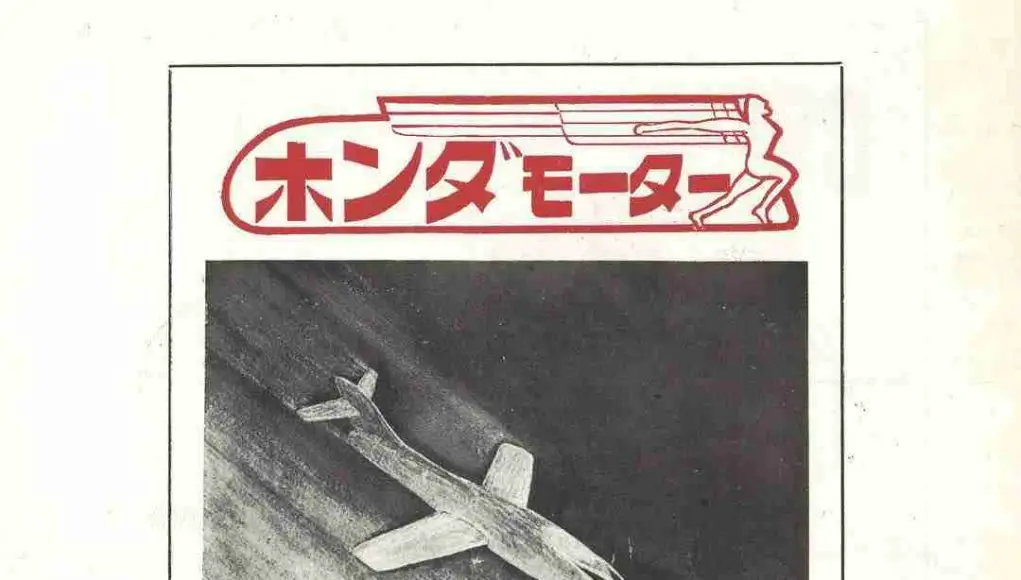Honda’s founder, Soichiro Honda, was quite fond of jets, so how awesome is it that this 1949 Honda ad features something that almost looks like a HondaJet.
The HondaJet took its first flight in 2003, bringing full-circle a dream borne from its founder and first put into action as early as 1986. So when Honda’s manager of shows and exhibits shared an early photo of a Honda ad from 1949 on his personal Instagram earlier yesterday (Feb. 12, 2019) showing Honda’s first full-motorcycle next to a rendering of a jet, it sent shivers down my spine to see just how much Soichiro himself thought about jets and how the HondaJet is mission accomplished for Honda’s dream that was once just an idea.
Here’s two photos showing the ad below.
The late 40’s was the dawn of the jet age with jet propulsion ushering an era of the future that was full of optimism and prosperity. It’s no wonder that a lot of advertisements, like this Honda one, featured jets alongside their new products. It’s simple marketing by association. Nonetheless, the fact that this rendering shows a personal light jet in comparison to a personal light motorcyle, shows how forward-thinking Honda was.
There could not be a more fitting vehicle to showcase next to the jet as the Honda D-Type a.k.a. the Honda Dream Type D as that bike was literally Honda’s first full vehicle, designed, engineered, and produced by Honda itself. Noteworthy is the 124 MPG claim advertised to the side, showcasing how fuel-efficient this bike is, but we’ll get into that a bit later.
Up until that point, Honda only produced engines for bicycle frames. They were really good engines, so much so that by the time Honda reached Honda Type C (from Honda Type A, and B), the engines were too powerful for regular bicycle frames. Thus the D-Type was born with its own pressed steel frame that was easy to weld and mass-produce.
According to a piece by Japan Policy Forum, the young Soichiro Honda had already been nurturing a love for airplanes and jets, a fascination that began since he was 10 years old when he first saw an aircraft. Soichiro was so interested at that age that he literally rode 20 miles on a bicycle to catch a glimpse of famed pilot Art Smith in action. You can imagine someone so young riding for so long, Soichiro must’ve really wanted to see that plane.
Fast forward to 1986 and Honda’s engineers began working on a skunkworks project of sorts to build and develop Honda-made jet engines and aircraft frames.
1992, a year after Soichiro’s passing, Honda’s skunkworks team completed their Honda MH02, an experimental business jet built by Honda in cooperation with Mississippi State University. Note the placement of the engines on the wings, a design feature that contributes to the jet’s overall fuel efficiency at cruising altitudes.
In a 1997 press release, Honda announced its first ever Honda engineered Jet Engine, the HFX-01 prototype, a turbofan engine that led to the development of HFX-20, a much more efficient and capable version of the aforementioned prototype engine.
The MH02 and early turbofan engines were the beginnings of what the HondaJet is today.
Honda’s jet team already had a sketch of what the HondaJet would look like in 1999, the design was wind tested by Boeing two years later, and a Honda-GE partnership in 1999 led to the development of the HF-120, the jet engines that would be mounted on the HondaJet itself.
According to Honda, compared to similar jets, Honda’s uses 20 percent less fuel. Remember that fuel efficiency marketing point from the D-Type ad?
Honda’s HA-420 took flight in 2003, officially debuted two years later and, after several delays, began production in 2015.
At the end of fiscal year 2018 Honda reports they’ve sold 75 of their HondaJets not to mention over a hundred HF120 turbofan engines.
It’ll be a long road before the HondaJet actually breaks a profit but their ever-expanding global reach, class-leading performance, and diversified portfolio of products, unlike other jet manufacturers, only bodes well for the future of Honda’s aircraft and turbojet engine manufacturing arm.
Back then, Honda was rightfully proud of its first Honda bike. Just decades later, his own jets would be flying around the skies of Japan and all over the world.
Source: @HondaCubF




